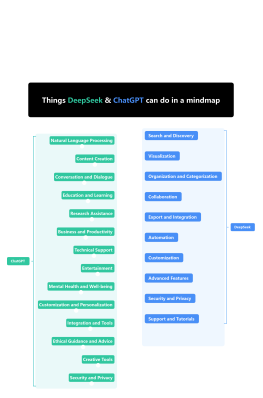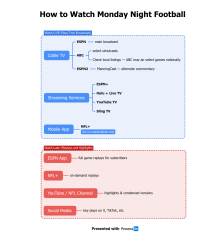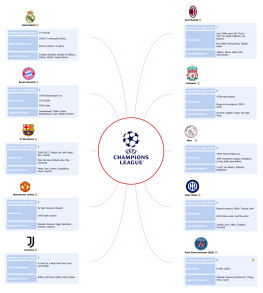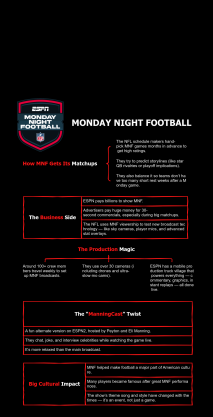
Inside the AFL (Australian Football League): History, Rivalries, and Cultural Impact
4 Report
This mind map provides an insightful exploration into the Australian Football League (AFL), detailing its unique characteristics, historical rivalries, and cultural impact. Originating in 1858, the AFL has grown into Australia’s national sport, known for its physicality, speed, and distinct gameplay on expansive oval fields. The league's deep-rooted community ties are evident in iconic rivalries like Collingwood vs. Carlton. Beyond the field, the AFL mirrors Australia's multiculturalism, with initiatives like Indigenous Round and AFLW promoting inclusivity. Looking ahead, the league's expansion to Tasmania and ongoing discussions about fairness and representation highlight its evolving nature.
Related Recommendations
Other works by the author
Outline/Content
See more
What Makes AFL Unique?
Played on oval fields, often larger than soccer or rugby grounds.
360-degree gameplay and no offside rule encourage open movement.
Ball can be kicked, handballed, or bounced — no throwing allowed.
Players can run up to 15km per match, with frequent collisions and marks.
The AFL Experience
MCG is considered the spiritual home of Aussie rules.
Clubs are community-backed with deep local roots and fierce loyalty.
Aussie BBQs, scarf-waving, chants, and parochialism define the match-day.
Iconic Rivalries
Collingwood vs. Carlton – A battle dating back over 100 years.
Showdown – Adelaide Crows vs. Port Adelaide Power, known for its intensity.
Derby – West Coast vs. Fremantle in the Western Derby in WA.
Society and Identity
AFL reflects Australia’s multiculturalism and regional identities.
First Nations athletes play a huge role; AFL hosts Indigenous Round and Dreamtime at the 'G.
AFLW empowers women in sport, building representation and inclusivity.
Looking Ahead
Tasmania will join as the 19th team, marking a historic expansion.
There is ongoing debate around the fairness of the fixture and bye system.
AFL's commitment to gender equality, Indigenous recognition, and mental wellness is evolving.
AFL at a Glance
Australia’s national sport blending physicality, speed, and aerial skills.
Originated in 1858 and became a professional league in 1897 as the VFL.
Renamed the AFL in 1990 to reflect national expansion.
Struggles and Rebuilding Stories
St Kilda’s 1966 premiership remains its only flag; the drought continues.
Gold Coast Suns are yet to make finals since entering in 2011.
Rebuilding is a key narrative in AFL; draft picks and youth development matter.
Player Culture
Players often idolized as local heroes with a 'play hard, train hard' mentality.
Clubs emphasize leadership, mental health support, and development programs.
Off-field scandals sometimes tarnish the image, but AFL enforces strict codes.
Beyond the Field
Fantasy footy and SuperCoach draw in over a million participants annually.
Clubs publish podcasts, documentaries, and behind-the-scenes content.
AFL House in Melbourne governs the sport’s rules, integrity, and innovation.
Quirky AFL Traditions
The 'banner run-through' is a classic pre-game club ritual.
‘Meat tray raffles’ in local footy clubs show grassroots connection.
Fans throw scarves, dance after wins, and participate in quirky chants like 'Collingwood ferals'.

0 Comments
Next Page







